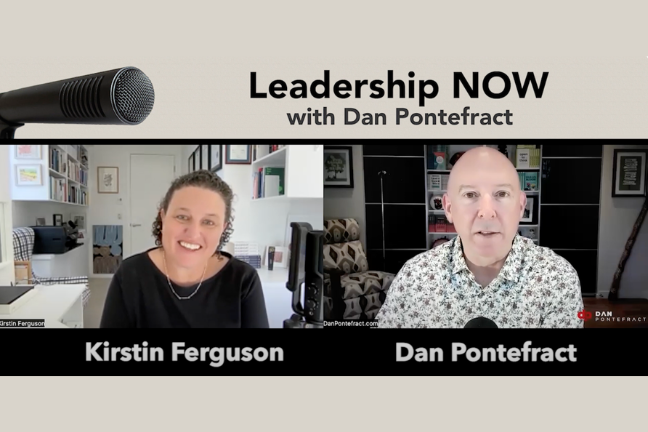
Complete the Head & Heart Leader Scale™ and receive a free, personalised report here.
Complete the Head & Heart Leader Scale™ and receive a free, personalised report here.
Kirstin Ferguson
December 8, 2020
In a year when millions of people across the world have struggled to manage their lives and work through a dual health and financial crisis, we have been reminded – yet again – why diversity and inclusion policies and practices are critical.
During Covid-19 it has been diverse employees – women, LGBTQ+ employees, people of color —who have had to face some of the toughest challenges, both in the workplace and through demands of balancing work and home life.
Yet new research reveals that nine out of ten executives are finding it hard to execute their diversity and inclusion (D&I) strategies; a convincing fail by any standard and a particularly bitter pill when diverse employees are living through a period when these strategies are most needed.
Last month McKinsey & Company published the findings from their study of 1,122 executives and 2,656 employees across 11 countries during August – September, 2020. The study examined the impact of Covid-19 on women, LGBTQ+, people of color and working parents.
The research found that only one in six people from these diverse groups felt more supported by their employers now than in pre-COVID times. This is despite the research finding that each of the groups were found to be disproportionately impacted by the pandemic than other employees.
Maureen Frank is the Founder and Chief Disruption Officer of the diversity and inclusion library, Emberin. One of the issues that she believes has limited progress in D&I has been a focus by some companies on appearance as opposed to fundamental change.
“In the past leaders and organisations have proudly shouted about how good they are at diversity and inclusion. They have won awards; they have run big PR oriented events. The truth however is that much of the rhetoric does not match the reality” according to Frank.
Frank confirms that there has “never been a time when it is more urgent for organisations to leverage the voices of all their people – across genders, generations, cultures, ethnicities, and backgrounds”.
Pre-existing inequalities have been amplified by Covid-19
The McKinsey research supports the need for urgency around D&I highlighting that pre-existing inequalities have only been amplified by Covid-19 and diverse employees report additional challenges that have been felt more acutely than their non-diverse counterparts.
For example, the McKinsey research found that women face a disproportionate level of stress as a result of Covid-19 than men. Women are 1.2 times more likely to cite acute difficulties with workload increases, connectivity and belonging, and physical health. In the US, women are 2.6 times as likely to report serious challenges with mental health as compared with their male counterparts.
The gender disparity extended to working mothers as compared to working fathers as well with 73 percent of working mothers reporting having struggled with household responsibilities and mental health concerns compared with 65 percent of working fathers.
For LGBTQ+ employees, where allyship in social and work settings is an important source of belonging, the McKinsey report found LGBTQ+ employees were 1.4 times as likely as straight and cisgender employees to cite significant challenges with fair performance reviews, workload increases, and struggling with a loss of workplace connectivity and belonging.
Given the disproportionate health impacts of Covid-19 experienced by people of color, it is not surprising that people of color surveyed reported more acute challenges than other employees in workplace health and safety as well as career progression and household responsibilities.
Leaders need to walk the diversity talk
For leaders, the challenges facing diverse employees are often well known. The breakdown seems to arise when it comes to leaders understanding how to best roll out D&I initiatives that can truly make a difference at an individual level often within a large organisation.
The challenge has been further exacerbated this year through having to lead in a largely virtual environment.
“The work we have done in the past in creating inclusive cultures is easy compared to our current environment. It is easy for leaders to try new things and experiment when someone is right there, when they have visibility” says Frank.
Those surveyed by McKinsey suggested four key reasons why D&I initiatives were failing and none of these seem particularly unique to the context of Covid-19 –
1. Lack of employee awareness of D&I programs (26 percent);
2. Financial incentives not being aligned with D&I goals (25 percent);
3. Insufficient leadership role modelling (25 percent); and
4. Being stretched too thin (23 percent).
Where there is a lack of leadership priority, role modelling and communication around diversity and inclusion it is no wonder even the best-intentioned initiatives fail.
According to Frank, the success of D&I in the future will depend on leaders looking in the mirror –
“I hope leaders will be okay with greater vulnerability and realising that they are perhaps not as inclusive as they think they are and claim to be. A leader who has a growth mindset and wants to learn and knows they don’t know everything about difference and creating a sense of belonging for an individual – that leader is way more likely to succeed at being inclusive than the leader who claims they are the expert!”.
The need for leaders to listen and learn is supported by the McKinsey research which highlights the need for companies to provide more targeted support to their diverse employees. While company-wide responses to working virtually may have alleviated some initial challenges for employees, diverse employees are still struggling to cope with a wide range of issues that go well beyond remote working.
Every leader needs to ask themselves how high a priority they have placed on supporting their diverse employees during Covid-19 and what they can be doing to move it back up the agenda to ensure D&I initiatives are actually making a difference where they are needed.
Frank has a call to action for all leaders to consider – “Creating an inclusive culture where we are curious, where we challenge group think and the way things have always been done and where we live and breath a growth mindset: that’s the charter of an organization that will smash through this mess and come back fighting!”.
If you are a leader and the last time you thought about D&I was at a physical celebration of some kind before you had even heard of Covid-19, now is the time to do something meaningful to truly show you understand how to walk the talk with diversity and inclusion beyond the PR hype.




